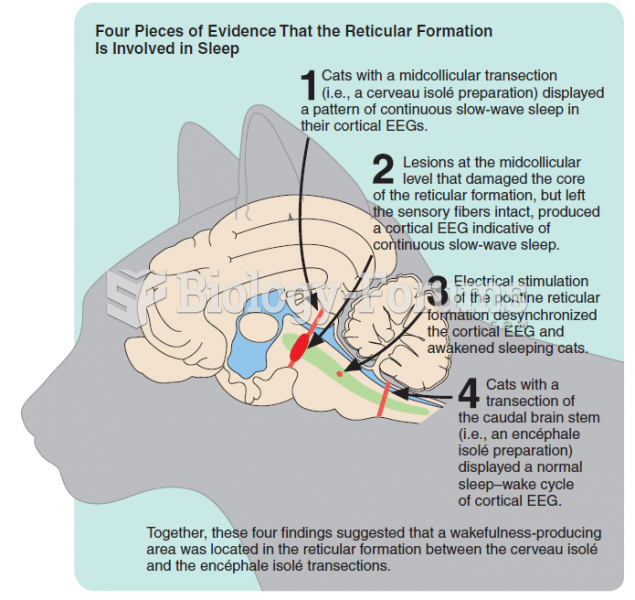|
|
|
Certain topical medications such as clotrimazole and betamethasone are not approved for use in children younger than 12 years of age. They must be used very cautiously, as directed by a doctor, to treat any child. Children have a much greater response to topical steroid medications.
More than 150,000 Americans killed by cardiovascular disease are younger than the age of 65 years.
The U.S. Preventive Services Task Force recommends that all women age 65 years of age or older should be screened with bone densitometry.
Blood in the urine can be a sign of a kidney stone, glomerulonephritis, or other kidney problems.
To prove that stomach ulcers were caused by bacteria and not by stress, a researcher consumed an entire laboratory beaker full of bacterial culture. After this, he did indeed develop stomach ulcers, and won the Nobel Prize for his discovery.
 (a) Age of maturity of Atlantic cod decreased during the fishery collapse. (b) Evidence of maturatio
(a) Age of maturity of Atlantic cod decreased during the fishery collapse. (b) Evidence of maturatio
 Variation in coat pattern in zebras. The patterns show progressively more black left to right and to
Variation in coat pattern in zebras. The patterns show progressively more black left to right and to
 Bone fractures that occur before death show signs of healing. The process of fracture healing starts
Bone fractures that occur before death show signs of healing. The process of fracture healing starts




